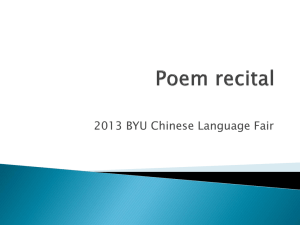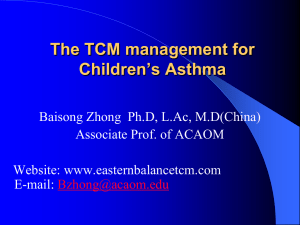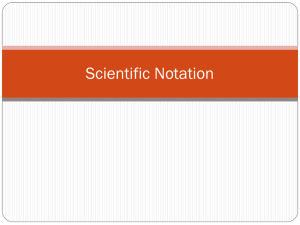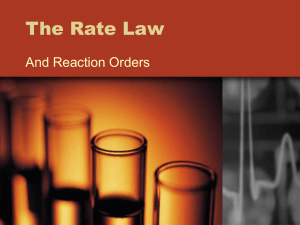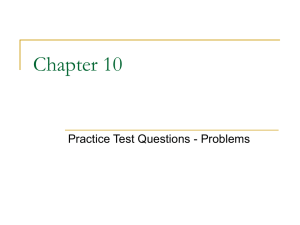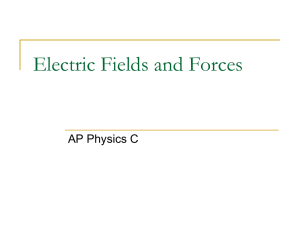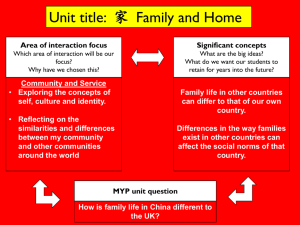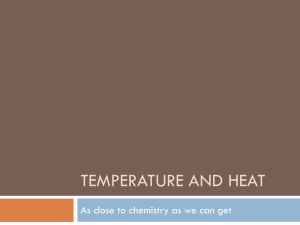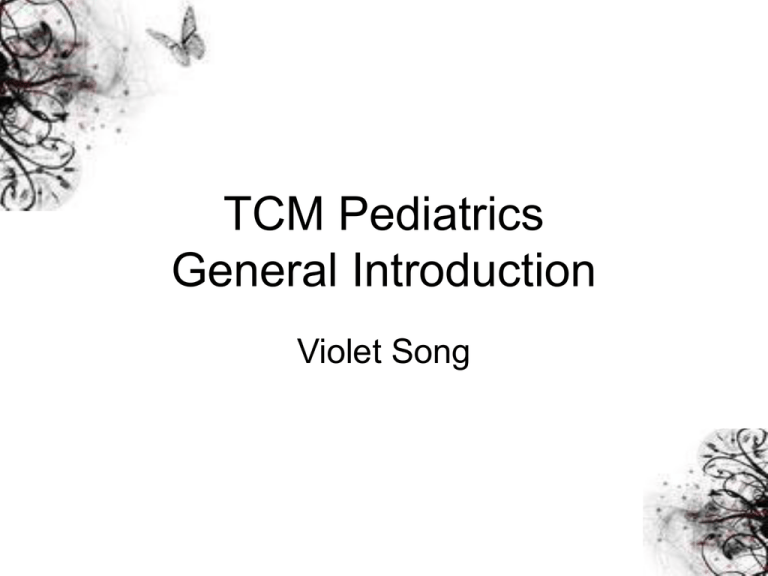
TCM Pediatrics
General Introduction
Violet Song
Introduction
Bian Que (4 century BC.)
The first TCM Pediatrician
in history
• Sui Dynasty
– Cao Yuanfang(6-7
century A.D)
Zhu Bing Yuan Hou Lun
(Treatise on the Origins &
Symptoms of Various
Diseases)
• North Song Dynasty
– Qian Yi (1032-1113 A.D)
Xiao Er Yao Zheng Zhi Jue
(A Collection of Essential Pediatric
Patterns &Treatments)
Pediatric Sage
Physiology
• The internal organs are tender and fragile
and the Qi is not full
• Children have a pure yang constitution
Etiology
•
•
•
•
•
•
Congenital factor
External factor
Diet
Emotional factor
Injury
Medical factor
Pathology
• Children are easily susceptible to disease
which then transmits and changes rapidly
• Children’s internal organ Qi is clear and
effective; therefore, they easily and quickly
return to health
• Insufficient
– Lungs
– Spleen
– Kidneys
– yin
• Excessive
– Liver
– Heart
– yang
Pediatric Diagnosis
•
•
•
•
Observation
Listening and smelling
Inquiring
Palpation
Observation
•
•
•
•
•
•
Observe Shen and color
Observe body form
Observe sprouts and orifices
Skin eruption
Urine & stools
Index finger vessel
Observe Shen and color
• Yellow, relates to SP, indicates :
– Weak constitution
– Improper diet
– Dampness
• Green, relates to Liver,
indicates:
–Wind
–Pain
–Blood stasis
–Convulsion
• Red, relates to H, indicates:
–Heat
–Convulsion
• White, relates to LU, indicates:
–Deficiency
–Cold
• Black, relates to K, indicates
–Cold
–Pain
–Water retention
–Malignant situation
Observe body form
•
•
•
•
•
•
head, neck, fontanel
trunk
limbs
skin
hair
nails
Observe Sprouts &Orifices
•
•
•
•
•
•
•
•
Eyes
Babies have white coat syndrome!
Nose
Babies afraid of you? Take off your coat.
Teeth
Throat
Cheeks
Tongue
Ears
Two lower orifices
• Observe stools
• Observe urine
Veins in the Index Finger
– Check the location of veins in the index
finger
•
•
•
Veins in Wind Bar (the area between the
metacarpal phalangeal joint and the proximal
inter-phalangeal joint): indicates acute stage,
superficial and beginning of a disease and
therefore it has a better prognosis
Veins in Qi Bar (between the proximal and
distal inter-phalangeal joints): indicates the
middle stage of a disease and the prognosis
is not as good;
Veins in Life Bar (from the distal interphalangeal joint to the tip of the index finger):
indicates the severe stage of a disease and
the prognosis is worse.
•
•
•
•
•
•
Superficial-Exterior
Deep- Interior
Red-Cold
Purplish- Heat
Fluency-Deficiency
Sluggish-Excessive
– Check the color of the veins
•
•
•
•
•
•
•
Fresh red: external excessive cold
Purple red: external or internal excessive heat
syndrome
Green color: pain and panic or fear
Dark purple or black purple: food stagnation,
particularly for blood stagnation
Light or pale red: deficient cold
Light or pale yellow: Inner wind due to spleen
deficiency
Light or pale purple: deficient heat
Listening & smelling
•
•
•
•
•
Crying
Breathing
Coughing
Language
Smelling
Inquiring
Palpation
•
•
•
•
Fontanel
Skin
Chest
Abdomen
Pulse
Age >3 y
Take 3 guans with one finger
Superficial
Slow
With strength
Deep
Rapid
Without strength
•
•
•
•
•
•
Age
Breathe(/min)
New born 40~45
<ly
30~40
2~3y
25~30
4~7y
20~25
9~l4y
18~20
Pulse(/min) B:P
120~140
1:3
110~120
1:3~4
100~120
1:3~4
80~100
1:4
70~90
1:4
Treatment
• Treatment principles
• Treatment methods
• Dosage
• Be careful with extremely bitter, cold, acrid,
heat herbs, toxic herbs, harsh herbs
• Once the treatment works , do not
continue.
• Choose the mild herbs from the same
category
• The prescription must be convenient for
taking
• Do not prescribe herbs without symptoms
• Internal treatment - herbal
• External treatment
• Tuina and acupuncture
Other Methods
•
•
•
•
•
Inhalation therapy
Drops
Herb bags
Bathing
Warm ironing
Dosage
•
•
•
•
•
New born baby 1/6 of adult dose
< 1 year old, 1/3 of adult dose
1-6 years old, 1/2 of adult dose
7-12 years old, 2/3 of adult dose
Over 12 years old, same dose as adult
Administration
• <1y 100ml
• 1~3y 100~250ml
• >3y 250~500ml
TCM Pediatrics
Cough
Introduction
• 1.Concept
• 2. Onset
– Season
– Age: <3 years
– Characteristics
– Prognosis
The Etiology and Pathogenesis
– Due to invasion of external pathogens
– Due to irregular diet
– Spleen and lung Qi deficiency due to poor
body constitution
Wind Cold
External
Attack
Skin/Mouth/Nose
LU
Wind Heat
Dysfunction of
dispersing and
descending; Obstruction
of qi tract
Ph-H
Internal
Invasion
Dysfunction of
SP
Source of
phlegm
Weak
Susceptible to
Constitution ex- pathogenic
factors
Phlegm
Ph-Damp
Injury of
LU & SP
Adversely
Cough
upward qi due to
qi obstruction
Dysfunction of descending
The key points for diagnosis
– The sound of cough
– The amount of phlegm
– The color of phlegm
Commonly used herbs for cough
•
Herbs to remove external pathogens
–
•
Ma Huang, Zi Su Ye, Jing Jie, Fang Feng, Qiang Huo, Sheng
Jiang; Bo He, Sang Ye, Chai Hu
Herbs to descend lung Qi
–
•
Chen Pi, Zhi Ke, Lai Fu Zi, Hou Po
Herbs to remove phlegm
–
–
–
–
Qian Hu, Bei Mu, Gua Lou, Dan Nan Xing (heat-phlegm);
Ban Xia, Zhi Tian Nan Xing, Xuan Fu Hua, Jie Geng (coldphlegm);
Xing Ren, Zi Wan, Kuan Dong Hua, Su Zi, Pi Pa Ye, Sang Bai
Pi (relieve coughing and wheezing);
Fu Ling, Du Huo (dampness)
• Herbs to remove heat
– Zhi Zi, Shi Gao, Lu Gen, Huang Qin, Lian
Qiao, Yu Xing Cao
• Herbs to moisten lungs
– Sha Shen, Mai Men Dong, Yu Zhu
• Herbs to tonify lungs
– Huang Qi, Ren Shen, Dang Shen, Gan Cao,
Bai Zhu
Differential Diagnosis and Treatment
•
•
1.External cough
2.Internal cough
• 1-1 Wind-Cold Cough
– Symptoms- Frequent cough with heavy sound, itchy
throat, thin white phlegm, stuffy nose and runny nose,
aversion to cold and without perspiration, or fever with
body pain
• T-light red tongue body with thin white coating
• P-floating tight pulse; floating red finger vessel
– Therapy- Expel wind – cold, disperse lungs to stop
cough.
• Formula: Jīng Fáng Bài Dú Sǎn
–
–
–
–
–
–
–
–
–
–
–
–
Jīng Jiè
Fáng Fēng
Qiāng Huó
Dú Huó
Chuān Xiōng
Chái Hú
Qián Hú
Jié Gěng
Zhǐ Ké
Fú Líng
Gān Cǎo
Shēng Jiāng
Jīng Fáng Èr Huó Èr Hú Xiōng
Zhǐ Ké Fú Líng Jié Gān Yōng
• Modification:
– Cough with large amount of phlegm, greasy
coating : Hòu Po, Cāng Zhú
– Severe cold: Má Huáng
• 1-2. Wind-Heat Cough
– Symptoms- cough with sticky yellow phlegm
or with difficulty to cough phlegm out. Thirst
and sore throat, turbid snot, or accompany
with fever and headache, aversion to wind,
sweating
• T- red tongue body with thin yellow coating
• P-floating rapid pulse; floating purple finger
vessel.
– Therapy-Expel wind and clear heat, disperse
lung and resolve phlegm.
– Formula-Sāng Jú Yǐn
•
•
•
•
•
•
•
•
Sāng Yè
Jú Huā
Xìng Rén
Lián Qiào
Bó He
Jié Gěng
Gān Cǎo
Lú Gēn
Sāng Jú Yǐn Yòng Jié Xìng Qiào
Lú Gēn Gān Cǎo Bó Hè Ráo
• Modifications
– Severe LU heat with yellow sticky phlegm, yellow
coating: HuángQín, ZhīMǔ, YúXīngCǎo
– Severe ST heat with heavy breathe, severe thirst:
ShíGāo, TiānHuāFěn
– Red and swollen tonsil: NiúBàngZǐ, ShèGān,
XuánShen, BǎnLánGēn
– Sever cough & a lot of phlegm: ZhèBèiMǔ,
TíngLìZǐ
• 2-1. Damp-Heat Cough
– Symptoms-Cough with large amount of
phlegm, or cough with retching. Epigastria
distension and poor appetite; turbid thick snot;
afternoon fever, the disease is lingering.
• T-red tongue body with thick greasy or greasy
yellow coating
• P-slippery & rapid; purplish sluggish finger
vessel
– Therapy-clear and disperse lung, resolve
phlegm and eliminate dampness
– Formula –Shàng Jiāo Xuān Bì Tāng
•
•
•
•
•
Pí Pā Yè
Shè Gān
Dàn Dòu Chǐ
Yù Jīn
Tōng Cǎo
• Modifications:
– Severe dampness: Bàn Xià
– Severe heat: Huáng Qín
• 2-2 Phlegm-Heat Cough
– Symptoms-cough with thick sticky yellow
phlegm and with difficulty to cough the phlegm
out. Red face and lips, bitter taste in mouth
and thirst; fever, dry stools, concentrated
urine
• T-red tongue body with greasy yellow coating
• P-slippery & rapid; purple finger vessel,
– Therapy-clear heat from lungs and resolve
phlegm
– Formula-Qīng Qì Huà Tán Wán
•
•
•
•
•
•
•
•
•
Guā Lóu Rén
Dǎn Nán Xīng
Huáng Qín
Bàn Xià
Chén Pí
Zhǐ Shí
Xìng Rén
Fú Líng
Jiāng Zhī
• Modification:
– A lot of phlegm and fast breathing: Yú Xīng
Cǎo, Sāng Bái Pí
– Sticky plegm which is difficult being
coughed out : reduce Bàn Xià, add Qīng
Dài, Hǎi Gé Fěn, Shā Shēn
• 2-3 Phlegm Dampness Cough
– Symptom-cough with large amount of white
watery phlegm. Chest oppressed and poor
appetite, fatigue and lassitude
• T-light red tongue body with white greasy
coating
• P-slippery
– Therapy-dry dampness and resolve phlegm
– Formula 1- Liù Ān Jiān
•
•
•
•
•
•
•
Bàn Xià
Chén Pí
Fú Líng
Gān Cǎo
Xìng Rén
Bái Jiè Zǐ
Shēng Jiāng
– Formula 2 –Èr Chén Tāng
•
•
•
•
Bàn Xià
Chén Pí
Fú Líng
Zhì Gān Cǎo
• Modification
– With oppressed chest : Sū Gěng、Zhǐ Ké
– With food stagnation: Shén Qǚ, Mài Yá, Shān
Zhā, Lái Fú Zǐ
• 2-4 Dry Cough due Yin-Deficiency
– Symptoms-non-productive cough, or with
little sticky phlegm and with difficulty to cough
it out. Thirst and dry throat, hoarse voice,
feverish palms, or phlegm with blood,
afternoon fever, night sweating
• T-red tongue body lack of coating
• P-thin rapid。
– Therapy-moisten lung yin
• Formula- Shā Shēn Mài Dōng Tāng
– Shā Shēn
– Yù Zhú
– Mài Dōng
– Tiān Huā Fěn
– Biǎn Dòu
– Shēng Gān Cǎo
– Sāng Yè
• Modification
– Yin deficiency: Xuán Shēn, Shēng Dì Huáng
– Severe cough: Chuān Bèi Mǔ, Zhì Pí Pá Yè, Zhì Bǎi
Bù
– Blood in phlegm: Bái Máo Gēn, Ǒu Jiē, Cè Bǎi Yè,
Ē Jiāo
– Tidal fever and nigh sweating: Yín Chái Hú, Biē Jiǎ,
Qīng Hāo, Dì Gǔ Pí
• 2-5 Chronic Cough due to Lung qi deficiency
• Symptoms-repetitive cough, cough without
strength, watery white phlegm, pale white face,
short of breath with disinclination to talk. Low &
weak voice, prefer warmth but aversion to cold.
Spontaneous sweating and aversion to wind
– T-pale tongue body with teeth marks on edge
– P-thin & lack of strength
• Therapy-invigorate spleen to tonify qi and to
stop cough.
• Formula-Liù Jūn Zǐ Tāng
– Rén Shēn
– Bái Zhù
– Fú Líng
– Zhì Gān Cǎo
– Chén Pí
– Bàn Xià
• Modification
– Qi and yin deficiency: Shēng Mài Sǎn
– Long duration of cough: Wū Méi、Hē Zǐ、
Wǔ Wèi Zǐ
Pediatric Asthma
Introduction
• 1.Concept
• 2. Onset
– Season
– Body constitution
– Stimulators
Etiology
– Internal factors
•
poor body constitution with lung, spleen and
kidney Qi deficiency, as well as retention of
phlegm and dampness
– External factors
•
•
Invasion of external pathogens, such as wind,
cold, dampness and dryness, etc, attacking the
lungs
Cold food or spicy food;
Pathogenesis
• Rebelling lung Qi with retention of phlegm
• Wheezing is called Xiào while dyspnea is
called Chuǎn. Dyspnea may be seen in
other diseases but the wheezing must
have dyspnea.
Cold-ph block
Phlegm & water
retention
Phlegm
obstruct in air
tract
Ex-cold & In-heat
Weak constitution
with lingering
pathogen
Remission
Attach to
stimulators
LU lost
descending
Asthma
Exogenous
Temperature
change
Ph-heat bind
Acute
Endogenous
Lu/Sp/K
deficiency
Deficient ex
Deficient mid-qi
Deficient Original qi
Diagnosis
•
•
•
•
Main symptoms
Repetitive onset
Disease history
Compare with pneumonia
Treatment strategies
• In acute stage, one should treat the
excess in the lungs while in the remission
stage, one should tonify lung, spleen and
kidneys. It’s therefore called treat the
upper in acute stage and treat the lower in
chronic stage.
• Prevent the dampness and phlegm is
another important issue. Take no cold food
or heavy greasy products.
During acute attack
1. Hot asthma
– Symptoms-Cough, panting, and wheezing,
thick, yellow-colored phlegm, fever, a red face,
a stuffy, oppressed feeling in the chest, thirst
with a desire to drink, reddish yellow urine,
dry stools or constipation,
• T-red tongue body with yellow coating
• P-slippery rapid pulse
– Therapy-Clear the lungs, transform phlegm,
and stabilize the asthma
1. Hot asthma
• Formula1- Dìng Chuǎn Tāng
–
–
–
–
–
–
–
–
–
Má Huáng
Bái Guǒ
Huáng Qín
Sāng Bǎi Pí
Bàn Xià
Kuǎn Dōng Huā
Xìng Rén
Sū Zǐ
Gān Cǎo
1. Hot asthma
• Formula 2-Má Xìng Shí Gān Tāng
– Má Huáng
– Shí Gāo
– Xìng Rén
– Gān Cǎo
• Modifications
– Severe heat: Yú Xīng Cǎo;
– A lot of phlegm: Zhú Lì
– Constipation: Quán Guā Lóu, Dà Huáng
During acute attack
•
2. Cold asthma
–
Symptoms-Cough with rapid breathing, the sound
of phlegm rattling in the throat, cough with clear,
watery, white-colored phlegm, a cold body and no
perspiration, a dull, lusterless, stagnant facial
complexion which may even be a bit bluish green,
lack of warmth in the four limbs, no thirst or thirst
with a desire for hot drinks only,
•
•
–
T-white greasy coating
P-floating slippery pulse
Therapy- Warm the lungs, transform phlegm, and
stabilize asthma
2. Cold asthma
• Formula 1- Xiǎo Qīng Lóng Tāng
–
–
–
–
–
–
–
–
Má Huáng
Guì Zhī
Sháo Yào
Gān Jiāng
Bàn Xià
Xì Xīn
Wǔ Wèi Zǐ
Gān Cǎo
• Xiǎo Qīng Lóng Yòng Guì Zhī Tāng
• Má Xì Bàn Xià Wǔ Wèi Cháng
• Formula 2- Shè Gān Má Huáng Tāng
– Shè Gān
– Má Huáng
– Xì Xīn (remove for kids)
– Zǐ Wǎn
– Kuǎn Dōng Huā
– Bàn Xià
– Shēng Jiāng
– Wǔ Wèi Zǐ
– Dà Zǎo
During acute attack
• 1-3 Exterior Cold & Interior heat
– Symptoms-fast wheezing, cough with phlegm
sound in throat, stuffy nose and sneezing,
runny nose with watery snot. Or aversion to
cold, hot sensation, yellow sticky phlegm,
thirst, dry stools, yellow urine
• T-red tongue body with white coating
• P-slippery rapid pulse, or with floating tight pulse.
– Therapy-relive exterior and clearing interior to
arrest asthma
• Formula-Dà Qīng Lóng Tāng
– Má Huáng
– Guì Zhī
– Xìng Rén
– Zhì Gān Cǎo
– Shēng Shí Gāo
– Shēng Jiāng
– Dà Zǎo
• Modifications
– Severe heat:HuángQín
– A lot of phlegm :Bàn Xià、Chén Pí、Sū Zǐ,or
Bái Jiè Zǐ、Tíng Lì Zǐ;
– Severe dyspnea: Dì Lóng;
– Heat phlegm: Dài Gé Sǎn, Zhú Lì
During acute attack
• 1-4 LU Excess & K Deficiency
– Symptoms-long duration of asthma, wheezing with
fullness in chest, getting worse after activities.
Lusterless complexion, aversion to cold and cold
limbs, fatigue, poor appetite, watery urine with large
amount. Often accompany with cough and phlegm in
throat
• T-pale tongue body with thin white coating;
• P-thin weak pulse
– Therapy- purge lung and tonify kidneys, consider
both Biao & Ben.
• Formula 1- Sū Zǐ Jiàng Qì Tāng
–
–
–
–
–
Zǐ Sū Zǐ
Bàn Xià
Qián Hú
Hòu Po
Chén Pí
– Dāng Guī
– Ròu Guì
– Gān Cǎo
– Shēng Jiāng
– Dà Zǎo
• Formula 2- Shè Gān Má Huáng Tāng
– Shè Gān
– Má Huáng
– Shēng Jiāng
– Xì Xīn
– Bàn Xià
– Zǐ Wǎn
– Kuǎn Dōng Huā
– Wǔ Wèi Zǐ
– Dà Zǎo
• Formula 3- Dū Qì Wán
– Shú Dì
– Shān Yào
– Shān Yú Ròu
– Dān Pí
– Zé Xiè
– Fú Líng
– Wǔ Wèi Zǐ
• Modifications:
– Dyspnea with heavy sweating: Wǔ Wèi Zǐ,
Huáng Qí, Fú Xiǎo Mài;
During the remission stage
•
2-1. Lung Qi deficiency
–
Symptoms- A dull white or somber white facial
complexion, shortness of breath and disinclination
to speak, a soft, low voice, fatigue, lack of strength,
spontaneous perspiration or sweating on slight
movement, fear of chill, lack of warmth in the four
limbs,
•
•
–
T- a pale tongue with thin white coating
P-thin lack of strength pulse
Therapy- Tonify lungs and secure the defensive
2-1. Lung Qi deficiency
• Formula-Yù Píng Fēng Sǎn
– Huáng Qí
– Fáng Fēng
– Bái Zhú
• Modifications
– Heavy sweating: (duan) Lóng Gǔ、Mǔ Lì、Fú
Xiǎo Mài;
– thirst, fever in palms and feet, red tongue
body with peeling coating: Shā Shēn、Mài
Dōng、Wǔ Wèi Zǐ
During the remission stage
•
2-2. Spleen Qi deficiency
– Symptoms-Cough with profuse phlegm,
diminished appetite, a full feeling in the
upper abdomen, a yellow, lusterless facial
complexion, loose stools, emaciation,
fatigue, lack of strength,
•
•
T-a pale tongue with scanty fur,
P-a slow forceless pulse.
– Therapy-Tonify spleen Qi and transform
phlegm
2-2. Spleen Qi deficiency
• Formula-Liù Jūn Zǐ Tāng
– Rén Shen
– Bái Zhù
– Fú Líng
– Gān Cǎo
– Chén Pí
– Bàn Xià
• Modifications
– Loose stools: Mù Xiāng、Shā Rén;
– Poor appetite: Jiāo Shān Zhā、Shén Qū、
Chǎo Gǔ Yá、Chǎo Mài Yá
During the remission stage
•
2-3 Kidney Qi deficiency
–
Symptoms-A somber or dull white facial
complexion, a cold body and fear of chill, lack of
warmth particularly in the feet and lower legs, lack
of strength in the lower legs, exertion causing heart
palpitations and rapid breathing, watery, loose
stools, possible bed-wetting at night,
•
•
–
T- a pale tongue with white coating,
P- deep, forceless pulse.
Therapy-Tonify kidneys and secure the root
2-3 Kidney Qi deficiency
• Formula- Jīn Guì Shèn Qì Wán
–
–
–
–
–
–
–
Dì Huáng
Shān Yú Ròu
Shān Yào
Fú Líng
Zé Xiè
Dān Pí
Guì Zhī
• Modifications
– Yin & yang deficiency :Rén Shēn、Gé Jiè、
Xiān Líng Pí、Wǔ Wèi Zǐ;
– Red tongue body with peeling coating: take
out Fù Zǐ、Ròu Guì,add Wǔ Wèi Zǐ;
– Night urine: Yì Zhì Rén、Tù Sī Zǐ
Other treatments
• Empirical Recipes
• External treatment
• Acupuncture and moxibustion
• Dry Dì Lóng powder in capsules
– 3g × 2 per day for heat type.
• Má Huáng、Wǔ Wèi Zǐ、Gān Cǎo ea. 30g
– Grind into powder and divide into 15 bags
– 1 bag × 2 per day for cold type.
• Shēng Shài Shēn 60g(DǎngShēn120g),Gé Jiè 2 Pc,
Má Huáng30g,Xìng Rén100g,Zhì Gān Cǎo50g,
Shēng Jiāng60g,Hóng Zǎo120g,Bái Guǒ100g
– Decoct 3 times and concentrate the decoction with
rock candy 500g.
– 2 Scoops per day for remission stage with short of
breath problem.
• Dōng Chóng Xià Cǎo 10g,stew pork 150g,LU & K
deficiency type。
• Bái Jiè Zǐ、Yán Hú Suǒ ea 21g,GānSuì、
Xì Xīn 12g,powder,divide into 3 bags,
every 10 days per bag.
• Ginger juice mix the powder as large as 5
cents coin.
• paste on BL13, BL15, BL17, REN17 for
2~4h
• the three ten-day periods of the hot
season
Lack of Appetite
Introduction
• 1.Concept
• 2. Onset
– Season
– Age: 1~6 years
– Prognosis
Etiology
•
•
•
Irregular diet
Post-disease
Constitutional weakness
Pathogenesis
• Dysfunction of SP and ST
Improper nursing
SP & ST injury
Improper Diet
Unwilling to eat
SP /ST qi
Deficiency
SP / ST yin
Deficiency
Poor
transformation
& transportation
Lack of appetite
Regulation of SP
& ST
Diagnosis
• Long duration
• Pale face, thin body form, but normal
activities
• Disease history
•
1. Irregularity of Sp & ST
– Symptoms-poor appetite, no thought for
food or drink, no taste in eating or drinking,
refusal to et or drink. Eat a bit more can
cause epigastric and abdominal distension.
A lusterless facial complexion and thin body
•
•
T-thin white or greasy thin white coating
P-slippery pulse; purplish engorged vein at
wind bar.
– Therapy-Invigorate SP and regulate ST
– Formula1 –Tiáo Pí Sǎn
•
•
•
•
•
Cāng Zhù
Chén Pí
Shén Qū
Jī Nèi Jīn
Pèi Lán
• Modifications:
– Severe abdominal distension: Mù Xiāng、Lái
Fú Zǐ;
– Yellow greasy coating: Huò Xiāng、Yì Yǐ Rén
– Formula 2-Bù Huàn Jīn Zhèng Qì Sǎn
•
•
•
•
•
•
•
•
Hòu Po
Huò Xiāng
Gān Cǎo
Bàn Xià
Cāng Zhù
Chén Pí
Shēng Jiāng
Dà Zǎo
• Huò Xiāng Píng Wèi Sǎn
•
2. SP / ST qi deficiency
– Symptoms- Unwilling to eat, eat without
delicious feeling, eat little, thin body form,
pale complexion, lassitude. Or loose stools
with undigested food.
•
•
T- pale with thin white coating
P- forceless pulse, a visible blue vein at the root
of the nose.
– Therapy-Invigorate SP and tonify qi
• Formula 1- Shēn Líng Bái Zhù Sǎn
– Rén Shēn
– Fú Líng
– Bái Zhù
– Shān Yào
– Lián Zǐ
– Biǎn Dòu
– Yì Yǐ Rén
– Shā Rén
– Jié Gěng
– Chǎo Gān Cǎo
– Dà Zǎo soup
• Modifications
– Abdominal distension: take out Gān Cǎo,
add Mù Xiāng、Xiāng Fù;
– Spontaneous sweating :Huáng Qí、Fáng
Fēng、Mǔ Lì
•
Formula 2-Yì Gōng Sǎn
–
–
–
–
–
Rén Shēn
Fú Líng
Bái Zhù
Chén Pí
Gān Cǎo
•
3. SP/ST yin insufficiency
– Symptoms- A dry mouth and a tendency to
drink a lot yet no desire to eat food, dry skin,
dry stools,
•
•
T-a mirror-like or shiny tongue with peeled fur
and red tongue with a scanty coating and scanty
fluids
P-thin rapid pulse.
– Therapy- Nourish SP & ST
– Formula- Yǎng Wèi Zēng Yè Tāng
•
•
•
•
•
•
•
Xuán Shēn
Mài Dōng
Shēng Dì
Shí Hú
Bái Sháo
Yù Zhú
Gān Cǎo
• Modifications
– SP qi deficiency :Shān Yào、Biǎn Dòu;
– Thirst: Lú Gēn、Tiān Huā Fěn ;
– Constipation: Huǒ Má Rén、Guā Lóu Rén
• Other treatments
– Tuina
– chiropractic therapy
knead and massage the muscles along the S
pine
Prevention
• Right nursing, correct bad habits.
• Find out the causes
Pediatric Diarrhea
Introduction
• 1.Concept
• 2. Onset
– Season
– Age: <2 years
– Prognosis
Etiology
•
•
•
Irregular diet
Invasion of external pathogens
Constitutional deficiency
Pathogenesis
• Middle Jiao disorder
• According to Neijing, the diarrhea happens
when the spleen Qi does not ascend but
descend. The turbid Qi does not descend,
it may causes fullness, abdominal
distention, gas and bloating, etc.
Exogenous
factors
SP fails to
transforme and
transporrte
Improper Diet
Fluid into
damp
Downward
together
with turbid
in LI
Injury of
SP & ST
SP &ST
deficiency
SP & K yang
deficiency
Food into
obstruction
ST/MJ fails to
digest
Diarrhea
Diagnosis
•
•
•
•
•
•
Frequency of bowel movement
Stools Color
Stools Quality
Stools Smell
Disease history
Compare with Dysentery
Herbs commonly used for digestive disorders
•
Herbs for removing food stagnation
–
•
Shan Zha, Shen Qu, Gu Ya, Mai Ya, Ji Nei Jin, Lai Fu Zi
Herbs for moving Qi and improving transportation
–
•
Chen Pi, (Hou Po), Zhi Shi/Ke, Da Fu Pi, Xiang Fu, Chai Hu, Mu
Xiang
Herbs for remove dampness and phlegm from middle Jiao
–
•
Huo Xiang, Hou Po, Cang Zhu, Cao Dou Kou, Ban Xia, Fu Ling,
Ze Xie, Yi Yi Ren, Sha Ren
Herbs for removing heat and dampness from middle Jiao
–
•
Lian Qiao, Huang Lian, Zhi Zi, Huang Bai, Qin Pi,
Herbs for stabilize and bind
–
•
Wu Wei Zi, Wu Mei
Herbs for tonify Qi and nourish Yin
–
Dang Shen, Bai Shu, Gan Cao, Huang Qi, Sha Shen, Mai Dong,
Yu Zhu, Bai Bian Dou
•
1. Food stagnation
– Symptoms-Abdominal pain and distention,
pain relieved by diarrhea, sour, foul-smelling
stools, bad breath, acid eructation, possible
desire to vomit, no thought for food or milk,
restless sleep, possible night-crying,
•
•
T-thick, slimy or slight yellow tongue fur,
P-a slippery pulse or a purplish, sluggish purplish
vein at the wind bar.
– Therapy-Eliminate food stagnation, lift clear
qi to stop diarrhea
– Formula-Bǎo Hé Wán
•
•
•
•
•
•
•
•
Jiāo Shān Zhā
Shén Qū
Bàn Xià
Fú Líng
Chén Pí
Lián Qiào
Chǎo Lái Fú Zǐ
Chǎo Mài Yá
• Obvious abdominal pain & distention: Mù
Xiāng、Hòu Po
• Vomiting: Shēng Jiāng
•
2. Wind cold invasion
– Symptoms-A somber white facial
complexion, lassitude of the spirit, chilled
limbs, abdominal pain, intestinal noises,
clear, watery stools with no foul odor,
possible aversion to cold with fever,
•
•
T-thin, white or white, slimy tongue fur,
P- floating tight pulse.
– Therapy-Expel wind cold, warm middle jiao
to stop diarrhea
– Formula-Huò Xiāng Zhèng Qì Sǎn
•
•
•
•
•
•
•
•
•
•
•
Huò Xiāng
Zǐ Sū Yè
Bái Zhǐ
Chén Pí
Bàn Xià Qū
Fú Líng
Bái Zhù
Dà Fù Pí
Hòu Po
Jié Gěng
Zhì Gān Cǎo
• Huò Xiāng Zhèng Qì use Sū Gěng
• Èr Bǎi Èr Chén and Hòu Pí
• Severe interior cold: Gān Jiāng
• Food stagnation: Shān Zhā
•
3. Damp heat
– Symptoms-Watery, thin stools colored deep
yellow with a foul odor, possible explosive
discharge, redness and burning around the
anus, occasional abdominal pain, devitalized
desire for food, possible nausea, fever or no
fever, oral thirst, short, yellow urine, bodily
fatigue,
•
•
T-red tongue body with yellow coating
P-slippery rappid
– Therapy-Clear heat, eliminate dampness to
stop diarrhea
– Formula-Gé Gēn Qín Lián Tāng
•
•
•
•
Gé Gēn
Huáng Lián
Huáng Qín
Zhì Gān Cǎo
• Modification
– Heat > damp: Huá Shí、Jīn Yín Huā、Lián
Qiào
– Damp>heat: Yì Yǐ Rén、Fú Líng、Chē Qián
Zǐ
– Abdominal distention: Hòu Po、Mù Xiāng
•
4. Spleen Deficiency
– Symptoms-Enduring diarrhea which does
not heal, loose stools, undigested water and
grains, diarrhea after eating, light colored
stools with no foul odor, a sallow yellow
facial complexion, emaciated, thin muscles
and flesh, lassitude of the spirit, listlessness.
•
•
T- a pale tongue thin with white fur
P-slow slippery pulse; blue vein at the root of the
nose
– Therapy- Tonify spleen qi, and lift qi to stop
diarrhea
– Formula-Shēn Líng Bái Zhū Sǎn
• Fú Líng
• Rén Shēn
• Zhì Gān Cǎo
• Bái Zhù
• Shān Yào
• Lián Zǐ
• Bái Biǎn Dòu
• Yì Yǐ Rén
• Shā Rén
• Jié Gěng
•
•
Shēn Líng Bái Zhū Lián Zǐ Gěng
Shān Yào Biǎn Dòu and Èr Rén
• Modification
– Severe SP damp, with greasy coating: Huò
Xiāng、Pèi Lán
– Poor appetite: Shén Qū、Mài Yá
– Abdominal distension: Hòu Po、Mù Xiāng
•
5. Spleen Kidney yang deficiency
– Symptoms-Enduring diarrhea which will not
stop, if severe, possible anal prolapse,
diarrhea after eating, clear, watery stools,
undigested food in the stools, a cold body
and chilled limbs, a somber white facial
complexion, lassitude of the essence spirit,
•
•
T-pale tongue body with white coating
P-deep thin pulse; or a blue vein at the root of
the nose.
– Therapy-Tonify spleen and wam kidneys,
consolidate to stop diarrhea
– Formula 1- Fù Zǐ Lǐ Zhōng Tāng ( Prepared
Aconite Pills to Regulate the Middle)
•
•
•
•
•
Gān Jiāng
Fù Zǐ
Rén Shēn
Bái Zhù
Zhì Gān Cǎo
– Formula 2-Sì Shén Wán
•
•
•
•
Ròu Dòu Kòu
Chǎo Bǔ Gǔ Zhī
Wǔ Wèi Zǐ
Wú Zhū Yú
– Formula 1+ Formula 2
• Modification
– Prolapsed of rectum: Huáng Qí、ShēngMá;
– Long term unstoppable diarrhea: Hē Zǐ、Chì
Shí Zhī、Yǔ Yú Liáng
•
7. Damaged yin fluid
– Symptoms-Enduring diarrhea which has
damaged yin fluids, lassitude of the essence
spirit, vexation and agitation, dry, parched
skin, sunken eyes and fontanel, diarrhea of
yellow water, short, scanty urination, dry
mouth, red lips,
•
•
T-crimson tongue body lack of fluid
P-thin and hollow pulse
– Therapy- astringent yin by applying sour
and sweet flavor herbs
– Formula-Rén Shēn Wū Méi Tāng
•
•
•
•
•
•
Rén Shēn
Lián Zǐ
Zhì Gān Cǎo
Wū Méi
Mù Guā
Shān Yào
• Modification
– Long term unstoppable diarrhea: Shān Zhā
Tàn、Chì Shí Zhī、Yǔ Yú Liáng
– Thirsty desire for water: Shí Hú、Yù Zhú
•
8. Damage of yang
– Symptoms-Enduring severe diarrhea which
has damaged yang qi. Watery stools, high
frequent bowel movements, lassitude of the
essence spirit, pale or greenish gray
complexion, weak breathe, cold
spontaneous sweating
•
•
T-pale tongue body with white coating
P-deep minute pulse
– Therapy- warm yang to rescue from yang
collapse
– Formula- Shēn Fù Lóng Mǔ Jiù Nì Tāng
•
•
•
•
•
•
Rén Shēn
Fù Zǐ
Lóng Gǔ
Mǔ Lì
Bái Sháo
Zhì Gān Cǎo
• Other therapy
– External treatment with herbs
– Acupuncture & Moxibustion and Tuina
• DīngXiāng2g,Wú Zhū Yú30g,
black pepper 30pc,
• Grind into powder 1~3g per day, mix
with vinegar, put on umbilicus
• Wind-cold attack type, SP deficiency type
• Male 5 yo
• Pt has diarrhea after eating mutton grill 2 d
ago. Diarrhea 5-6 x, smelly yellow watery
stools. N/V. Yellow scanty urine, thirst
w/desire for water, ab dist, borborygmus
(damp).
• T=red with y.greasy coat
• P=slippery
Enuresis
Introduction
• 1.Concept
• 2. Onset
– Age: >3 years
– Boys > Girls
Etiology
•
•
•
Congenital factors
Emotion disorders
Diet
Pathogenesis
• The kidneys failed to hold urine
Differentiation and treatment
•
1. Kidney qi deconsolidation
– Symptoms-Night time enuresis 1-2 or more
times each night, frequent, clear urination, a
pale, facial complexion, a tendency to low
back or knee soreness or weakness,
possible chilled limbs and a fear of cold,
•
•
T-pale tongue body with thin white coating
P-deep thin forceless pulse
– Therapy-Warm and supplement kidney
yang, secure and astringe the urination
• Formula 1- Jīn Suǒ Gù Jīng Wán
– Shā Yuàn Jí Lí
– Qiàn Shí
– Lián Xū
– Lóng Gǔ
– Mǔ Lì
• Formula 2- Sāng Piāo Xiāo Sǎn
– Sāng Piāo Xiāo
– Lóng Gǔ
– Cù Guī Bǎn
– Yuǎn Zhì
– Shí Chāng Pú
– Rén Shen
– Fú Shén
– Dāng Guī
• Formula 3- Suō Quán Wán
– Yì Zhì Rén
– Wū Yào
– Shān Yào
• Modification
– Fatigue, poor appetite, loose stools: Dǎng
Shēn,Fú Líng,BáiShù,Shān Zhā
– Poor IQ: Rén Shēn,Shí Chāng Pú,Yuǎn
Zhì
Differentiation and treatment
•
2. Spleen / Lung Qi Deficiency
– Symptoms-Night time enuresis, shortness
of breath, disinclination to speak, lassitude
of the spirit, lack of strength, a somber white
facial complexion, devitalized appetite, loose
stools, spontaneous perspiration,
•
•
T-pale tongue with white fur,
P- Thin and forceless
– Therapy- Bank origin and boost the Qi,
secure and astringe the urination
• Formula – Bǔ Zhōng Yì Qì Tāng
– Huáng Qí
– Rén Shēn
– Bái Zhú
– Zhì Gān Cǎo
– Dāng Guī
– Chén Pí
– Shēng Má
– Chái Hú
• Modification
– Spontaneous sweating: Duàn Mǔ Lì,Wǔ Wèi
Zǐ
– Obese due to phlegm accumulation: Cāng
Shù,Shān Zhā,Bàn Xià
Differentiation and treatment
•
3. Liver Channel Damp-heat
– Symptoms-Slippage of a small amount of
urine, which smells foul and is colored
relatively yellow, emotional tension and
agitation, talking in their sleep, bruxism
during sleep, red lips,
•
•
T- red tongue body with yellow or yellow greasy
coating
P-wiry rapid pulse.
– Therapy-Drain the liver and clear heat
• Formula- Lóng Dǎn Xiè Gān Tāng
– Lóng Dǎn Cǎo
– Huáng Qín
– Zhī Zǐ
– Mù Tōng
– Chē Qián Zǐ
– Zé Xiè
– Shēng Di Huáng
– Dāng Guī
– Gān Cǎo
• Lóng Dǎn Xiè Gān Zhī Qín Chái
• Shēng Di Chē Qián Zé Xiè Kāi
• Mù Tōng Gān Cǎo Dāng Guī Xià
• Modifications
– Bad sleep: Huáng Lián,Zhú Yè,Lián Qiào
– Severe smelling urine, yellow greasy coating:
Huáng Bǎi, Huá Shí
Other treatments
•
•
•
•
Patent formula
Empirical Recipes
External treatment
Acupuncture and moxibustion
• YìZhì Rén12g,Má Huáng Shí Chāng Pú
ea.10g,Sāng Piāo Xiāo 15g,Pig Bladder
1
• Cook pig bladder 30min first, then decoct
together with rest herbs 30 min
• 2 times per day, 4~8 bags
• K deficiency & phlegm covering type.
• Wǔ Bèi Zǐ, Hé Shǒu Wū ea. 3g
• Grind into powder, mix with vinegar, put on
umbilicus
• 1 time per night, 3~5 nights
• K deficiency type
Attention Deficit Disorder
Etiology
•
•
•
Congenital factors
Poor body constitution
Poor diet
Pathogenesis
• Deficient Yin failed to hold yang and yang
is floating
Differentiation and treatment
•
1. Spleen Deficiency, liver hyperactivity
–
Symptoms-Uncontrollable fidgeting, emotional
tension, easy anger, poor sleep, fatigue, diminished
appetite, easily developing diarrhea in response to
emotional stress,
•
•
–
T-thin white tongue coating
P- wiry pulse.
Therapy-Fortify the spleen and harmonize the liver
• Fomrula-Yì Gān Sǎn
–
–
–
–
–
–
–
Chǎo Bái Zhú
Fú Líng
Dāng Guī
Chuān Xiōng
Gōu Téng
Chái Hú
Gān Cǎo
Differentiation and treatment
•
2. Heart/Spleen insufficiency
–
Symptoms-A sallow or somber white facial
complexion, pale nails and pale lips, fatigue,
insomnia, heart palpitations, shortness of breath, a
poor appetite, a tendency to loose stools, poor
memory,
•
•
–
T- fat, pale tongue with thin, white fur
P- thin , weak pulse
Therapy-tonify the spleen and supplement the heart,
supplement the Qi and nourish the blood
• Fomrula-Guī Pí Tāng
–
–
–
–
–
–
–
–
–
–
Huáng Qí
Lóng Yǎn Ròu
Rén Shēn
Bái Zhú
Dāng Guī
Fú Shen
Zhì Yuǎn Zhì
Suān Zǎo Rén
Mù Xiāng
Zhì Gān Cǎo
Differentiation and treatment
•
3. Yin deficiency, yang hyperactivity
–
–
Symptoms-Besides tending to be thin, children with
this pattern also have a red tongue with diminished
fur or a pale tongue with a red tip. Their pulses are
fine and rapid and they tend to suffer from insomnia,
heart palpitations, agitation, dizziness, ringing in the
ears, possible low back pain, possible bed-wetting
at night, flushed cheeks, and possible night sweats.
Therapy-Supplement the kidneys and enrich Yin,
subdue yang and quiet the spirit
• Formula 1-Zuǒ Guī Wán
– Shú Di Huáng
– Shān Yào
– Shān Zhū Yú
– Gōu Qǐ Zǐ
– Chuān Niú Xī
– Tù Sī Zǐ
– Lù Jiǎo Jiāo
– Guī Jiāo
• Zuǒ Guī Wán Zhōng Yòng Guī Lù
• Niú Tù Zhū Gǒu Shān Yào Suǐ
• Formula 2-Shēng Mài Sǎn
– Rén Shēn
– Mài Mén Dōng
– Wǔ Wèi Zǐ
Differentiation and treatment
•
4. Phlegm confounding the portals of the
heart and heat harassing the heart spirit
–
Symptoms-Easy anger or pronounced irritability,
vexation and restlessness, possible nausea,
possible profuse phlegm, chest fullness and
oppression, a bitter taste in the mouth when waking
up in the morning,
•
•
–
T- tongue with red edges and slimy, yellow fur
P- wiry, slippery, rapid pulse.
Therapy-Remove heat-phlegm and calm Shen
• Formula-Huáng Lián Wēn Dǎn Tāng
– Bàn Xià
– Chén Pí
– Zhú Rú
– Zhǐ Shí
– Fú Líng
– Zhì Gān Cǎo
– Dà Zǎo
– Huáng Lián
– Wēn Dǎn Tāng Zhōng use ÈrChén
– Zhǐ Shí Zhú Rú and ShēngJiāng
Differentiation and treatment
•
5. Blood stasis obstructing the channels
and malnourishment of the portals
– Symptoms-Hyperactivity plus a history of
birth trauma with intracranial hemorrheage,
a dull, dark facial complexion, easy anger
over nothing
•
•
T- dark red tongue
P- choppy pulse
– Therapy-Quicken the blood and dispel
stasis
• Formula-TōngQiào Huó XuèTāng
– Chì Sháo
– Chuān Xiōng
– Táo Rén
– Hóng Huā
– Dà Zǎo
– Cōng Bái
– ShēngJ iāng
– Shè Xiāng
• Tōng Qiào Huó Xuè Táo HóngShè
• Chì Sháo Chuān Xiōng Cōng Jiāng Zǎo

